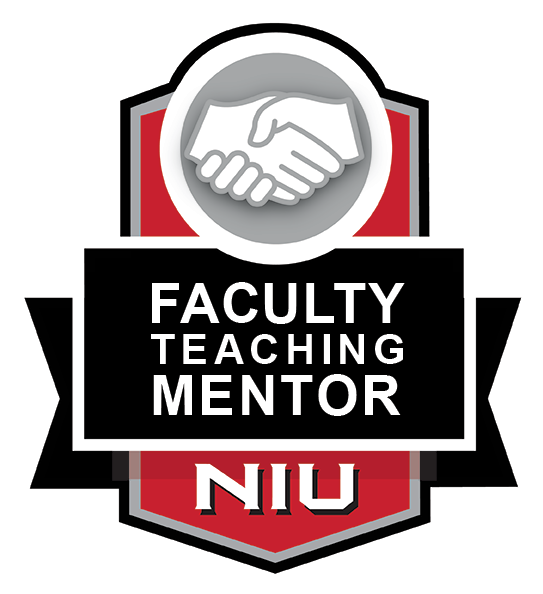 Sinclair Bell, Ph.D.
Sinclair Bell, Ph.D.
Presidential Teaching Professor
School of Art and Design
Teaching Expertise and Approach
Sinclair teaches undergraduate and graduate courses in Greek, Roman, and Egyptian art, architecture and archaeology. He describes his approach to teaching as follows:
"Cultivating a Passion for the Past
Most students have only the slightest background knowledge of the material I teach every semester in my introductory as well as upper-level courses. In addition, few or none possess any knowledge of the ancient languages (Greek, Latin) that are key to the understanding of these cultures. There is no better example of this than my course on the Etruscans, a once-powerful but now-obscure ancient Italic people who lived in the modern region of Tuscany. Commonly referred to as “mysterious” because we lack a full understanding of their origins and their language, and because they were largely written out of history by the Romans who conquered them, the Etruscans are the subject of fewer than five college courses nationwide.But in teaching this unfamiliar material to mostly first-generation college students, I frame it broadly as the story of a people who – although “mysterious” now – left a material record of their lifeways, hopes, and dreams that is both radically different from and hauntingly similar to our own. Students learn several words of Etruscan and their English derivatives (such as the word “augur”) and hear about the contributions that the Etruscans bequeathed to our own civilization. Thus, by the end of each semester of this course, many students confess their enchantment with this “lost” civilization: it is as if an entire new world has opened up to them. Each year, several even head to Italy on digs, to personally search for the Etruscans. This is my greatest source of joy in teaching: to promote a passionate interest in the past by those who had no or little previous knowledge or interest.
Creating Critical Consumers and Advancing Student Research
The need to understand how people lived in the past is an urgent one, especially where some “civilizations” erased others and in turn framed the narrative arc of history. In studying art history, then, there is far more at stake than the rote learning of images of objects and monuments. Because an ancient visual and material record fortunately still endures, art historians and archaeologists are now at once its interpreters and its guardians. As I argue all my classes, students, too, can be part of the project of recovering and understanding those lost voices by developing the requisite research skills for interpreting the evidence – skills which they can in turn apply in their own, image-saturated daily lives.While I instill this training in part through research papers and robust discussions, I also link theory to practice through the practical examples of my own research and those of colleagues. Nothing spurs student interest in the process of conducting research more than hearing first-hand accounts about real-life discoveries. My point in sharing anecdotes from my archaeological fieldwork and archival research is to make clear that carrying out research can be a slog, with long hours in dusty archives and sweaty trenches, and that it advances our knowledge mostly incrementally. At the same time, research can also afford those rare, thrilling moments of great discoveries. The possibility of achieving the latter requires a commitment to learning the craft of the often-tedious research that lays the groundwork for them – the same craft they can start to learn in the classroom and library.
Encouraging Student Agency and Creativity
Although I recognize that my primary role is to provide the bulk of the knowledge content in my classrooms, I also strive to create a setting in which students seize the initiative and take ownership of the material. In my introductory survey of art history, for example, I abandoned the traditional approach of teaching the “Western canon” chronologically and instead adopted a thematic approach, in which I make broad connections among cultures and time periods. For their part, students in this course complete three short research essays in which they construct their own canon by choosing three works of art/architecture from different cultures and periods that have meaning for them.Shifting the agency to the students has resulted in some truly breakthrough moments for me as an educator, such as when a student’s canon visualizes a deeply felt social or political cause (e.g., racial injustice) or a personal struggle (e.g., mental illness) in historical perspective. While art has tremendous potential to help students find meaning in their own lives, especially by connecting the deep past with their own contemporary experience, they need to be provided with not just the background knowledge about works of art but also the intellectual opportunity to gain purchase on their power. My desire as an educator is to provide both: through writing-infused, research-driven courses in which art and architecture from around the world – even the Western “canon” itself – is up for grabs.
Valuing Human Diversity and Diverse Perspectives
Granting students agency in this way prompts them to think about artistic form, genre, and meaning across space and time in ways that are much more challenging and, ultimately, productive for learning. It also provides an opening for discussions about how different cultures expressed themselves visually, and thus the social and cultural practices these images embody, however remote they may seem from our own world.During my time at NIU, I have not only redesigned my introductory art history survey but also created several seminars that integrate a variety of approaches and methodologies on how to look at issues of race, gender, and sexuality, among others. These courses seek to challenge students’ thinking by training them how to analyze critically a range of ancient material in order to “read” behind the orthodox sources (which were mostly created by elite males) and thereby to reconstruct alternative points-of-view. What was it like to be a woman, slave, or foreigner in antiquity and how can we recover their ephemeral perspectives? In framing discussions and exercises about this material, it is my intent that students interrogate their own biases and assumptions and in turn work toward greater understanding and acceptance of those who are different from them – both near and far, past and present."
Types of Courses Taught
- General Education
- Hybrid
- Seminar
- Honors
- Undergraduate
- Graduate
Courses Taught
- ARTH 486 - Art Historical Methodologies
- ARTH 465 - Introduction to Museum Studies
- ARTH 310 - Studies in Ancient Art
- Egyptian Art
- Aegean Art
- Archaic and Classical Greek Art
- Hellenistic Art
- Etruscan and Early Roman Art
- Roman Imperial Art

Contact
Sinclair Bell
Pronunciation sin-CLAIR Bell
sinclair.bell@niu.edu
815-753-1473
Art Building 201E
Personal Website